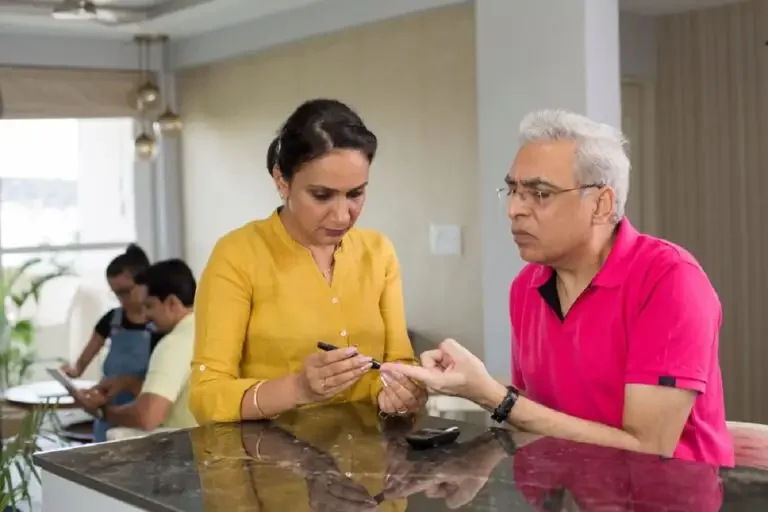The World Health Organization (WHO) describes Diabetes as a chronic metabolic disease characterized by elevated blood sugar levels (or blood sugar), which over time can cause severe damage to the heart, blood vessels, eyes, kidneys and nerves. It also states that approximately 422 million people worldwide have diabetes, most of whom live in low- and middle-income countries, and that 1.5 million deaths are directly attributed to diabetes each year.
Type 1 diabetes is an autoimmune disease in which the pancreas cannot produce enough insulin while at Type 2 diabetes, the body develops insulin resistance, resulting in abnormally high blood sugar levels. As such many diabetic patients life depends on insulin treatment, which can be given by injection or pump, to keep their blood sugar levels under control.
But a new technology automated insulin delivery is attempting to mimic the role of the pancreas, paving the way for breakthrough methods of diabetes surgery and its many manifestations. Also called artificial pancreas (AP) or closed-loop systems, the technology combines diabetes Devices, namely an insulin pump connected to a continuous glucose monitor (CGM) and a smartphone program. While insulin pumps have been used since the 1980s to mimic the secretion of a healthy pancreas for patients with type 1 diabetes, “these have to be done manually multiple times a day and therefore have not lived up to expectations,” said Dr. Jothydev Kesavadev.
However, the artificial pancreas automatically monitors blood sugar levels, calculates and dispenses the amount of insulin needed at different times of the day. This system helps control blood sugar levels and makes it easier for people to keep them in range.
What is AP and How Does it Work?
“AP consists of three parts – glucose sensor, program and pump. Continuous glucose monitor (CGM) tracks blood glucose levels every few minutes using a tiny sensor placed under the skin and wirelessly sending the information to a program. The sensor sends the necessary information to the smartphone or an insulin infusion pump. Based on the reading, the insulin pump then delivers small doses of insulin throughout the day when blood glucose is above the target range,” said Dr. David Chandy.
“You know how much insulin you need and the insulin infusion pump gets a signal when insulin needs to be delivered. The insulin infusion pump then delivers the required insulin. However, values vary with expert guidance,” said Dr. Pritam Moon, Medical Specialist and Diabetologist, Wockhardt Hospital Mira Road.
The Predictive Suspend system calculates blood glucose levels and stops insulin delivery before your blood sugar levels becomes too low. “Stopping insulin delivery at the right moment can help a person with type 1 diabetes avoid low blood sugar or hypoglycemia, a condition in which a person’s blood glucose level is below the target range,” said Dr. chandy
The gap, however, was in automating insulin delivery — which “used to be a dream,” said Dr. Kesavadev. “Surgical methods have been tried for more than 75 years, but all of these clinical trials have failed. Automation began with the availability of continuous glucose monitoring and algorithms to control insulin delivery. Although “artificial pancreases” have been available for 10 years, automation success has only been 40-60 percent,” said Dr. Kesavadev.
Why are we Talking About Diabetes Treatments?
The cost of treating diabetes is similar to treating heart attacks. Kidney disease, strokes, neuropathy, blindness, amputations, mental illnesses, etc., all of which can be prevented by “proper treatment of the underlying disease”. “This is why such expensive devices are being made available free of charge in many countries, as they will prove extremely cost-effective in the long run,” said Dr. published in Therapeutic advances in endocrinology and metabolism Magazine in October 2021.
In the paper mention Dr. Kesavadev, Gopika Krishnan and Viswanathan Mohan, how the diabetes community uses various technologies such as connected glucose meters, continuous glucose monitoring systems, continuous subcutaneous insulin infusion, closed circuit systems, digitization of health data and diabetes-related apps to prevent and treat the condition.
The WHO also states that for people with diabetes, access to affordable treatment, including insulin, is vital to their survival. “There is a globally agreed goal to halt the rise in diabetes and obesity by 2025,” says the WHO website.
In a previous interview with indianexpress.com Luke Coutinho, Holistic Lifestyle Coach – Integrative and Lifestyle Medicine and Founder of YouCare – All about YOU said that “integrating technology into diabetes management” is an excellent step in changing the face of this epidemic in our country and the world .
“One thing we are constantly reminded of through our daily practice is the fact that each of us is bio-individuals, not just in terms of genes, but also in the way our bodies respond to a particular one Food or a specific ingredient reacts. This is where technology like CGMS (Continuous Glucose Monitoring System) can help us personalize our approach and tailor it to a specific individual,” he explained.
What Types of AP are There?
There are different types of artificial pancreatic systems, said Dr. Chandy
They include:
Threshold suspend and predictive suspend systems
The Threshold Suspend and Predictive Suspend systems can temporarily halt or “suspend” insulin delivery when blood glucose levels drop.
Threshold suspend system
What is AP’s 780G?
780G is an advanced type of insulin pump that automatically monitors the insulin level to be delivered depending on food intake.
“This is the first time that 780G has achieved 80 percent success in automation and many patients using it have had success with a time in range (glucose within normal range) greater than 90 percent in 24 hours”, said Dr Kesavadev.
according to Dr Kesavadev, 780G is an international product from the United States. “Similar technologies have not yet reached India. It’s life-saving, especially for children with type 1 diabetes who struggle day and night to keep glucose levels in the right range,” he said.
How Does 780G Work?
Dr Kesavadev, who along with Dr. Arun Shankar, Gopika Krishnan and Geethu Sanal used and trained 780G in a 26-year-old person with type 1 diabetes, said that 780G automatically increases the insulin dose when glucose levels rise, and the insulin dose is automatically reduced when the glucose trend is low. “This happens once every five minutes without user intervention. When the meal is related insulin dosage is insufficient, an automatic correction dose is also delivered. The results are amazing. In our first patient, glucose stays within the normal range more than 90 percent of the time. This is an incredible achievement,” he said in a press statement.
For his part, the user said: “For a number of reasons, I have not had a good night’s sleep since my diabetes diagnosis for the past 16 years. The new automated insulin delivery device gives me restful sleep and has completely changed my life forever.”
Factors to Consider Before Starting
1. Age – Some models are rated for ages 2+, while others are rated for ages 6+
2. Whether you can put the devices in the right position without help, check that they are working properly and adjust them if necessary, or enter carbohydrate data
3.Parents should consult with the child’s doctor about appropriate artificial pancreatic systems.
4. How much does an artificial pancreas cost
Restrictions
Dr Chandy claims that AP systems are not completely hands off. “They have to regularly maintain the devices to make sure they’re working properly and enter meal sizes into the system at each meal,” he said.
Too Check
1. Check the CGM and infusion pump catheters to ensure they are in place and replace if necessary
2. Check CGM for accuracy
Given These Factors, is it Still Promising?
Notably, the diabetes burden has increased globally, with India having the second-largest number in the world after China, with 77 million people with diabetes, according to a study by the Indian Council of Medical Research – India Diabetes (ICMR-INDIAB).
AP has great potential to reduce the burden on diabetic patients in India, but the biggest challenge is cost, explained Dr. chandy “The most advanced system available in India would cost around six lakhs and the recurring monthly expenses would be around 12,000-15,000. Hopefully, Health insurance and reimbursement allows, the majority of people with type 1 diabetes could be using an artificial pancreas within the next five years,” he said.
Although very expensive, 780G is the only commercially available life-saving device in India, Dr. Kesavadev. “In order for more patients to benefit from this therapy, the government needs to make it available to them free of charge, especially for those aged 7 to 24 with diabetes,” he said, sharing that he and his team are also “doing an AP for what should be much cheaper for the common man”.
Dr Kesavadev also pointed out that more doctors and nurses need to be trained to use this “sophisticated technology,” without which insulin pump therapy typically fails. “The training will also help them identify suitable candidates and the type and level of training to be given to users and home caregivers.”
There may be errors and inaccuracies, and everyone may not understand how to use them, Dr. Moon pointed out. “It will take time for the people of India to become familiar with this technology. India has a rapidly growing diabetes population and many new methods have been introduced to help, but adaptation will take time,” said Dr. Moon.
Dr. Pritam Moon,
Medical Specialist and Diabetologist,
Wockhardt Hospital Mira Road.
Source: https://newsbeezer.com/india/how-an-artificial-pancreas-can-be-crucial-for-diabetic-patients/












